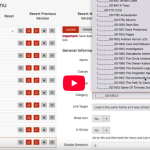
November 9,2022
Types of Digital B2B Ecommerce and Selling
When it comes to B2B ecommerce for manufacturers and distributors, there are multiple options that you can offer your products to other businesses, which one, will depend on what best suits your customers.
We’ll talk through the possibilities of the popular digital commerce options available and why they work well.
Self-service ecommerce
One of the simplest and most straight forward, self-service ecommerce is relatively self-explanatory: your customers go through the whole order process with little to no direct contact with the sales department.
This means your customers research the items they need, view the items on your website and order without, all without needing to talk to anyone. Everything that is needed to make an informed decision and complete an order is easily available for them.
Where it works well
Self-service ecommerce works well when everything your customer needs is simple to find. Where all the information they could need about a product is readily and easily available. It also works well for low consideration or repeat orders, which also have the benefit of having the ability to be completed at any time of the day.
This is ideal for B2B businesses where there is little need for customers to get directly in contact with you, helping cut down on the number of staff needed to process orders and answer customer queries.
As this requires little to no input from staff, it allows for a lot of automation. The website can be hooked up to a stock and order management system to keep the product availability up to date. The stock management system can be set up to reorder items, where stock falls below a certain threshold.
This works best where the items a company supplies are set in their use, with little customisation. It’s also better suited to businesses where negotiating final prices is rare, and where the ecommerce store has the ability to set up automatic discounts based on bulk ordering, to reduce the need to negotiate price.
Assisted ecommerce
Assisted ecommerce is where customers have all the digital tools available to research and order from a business (similar to self-service), however, there is more of a focus on customers being able to contact the business directly throughout the customer journey.
The business will likely have a dedicated sales and support team to deal with customer queries, as customers can be in touch at any point along throughout the buying cycle, whether it is to learn more about the products or company, placing an order to follow up support.
Where it works well
This works well in that it provides more contact options for the customer, giving them the ability to interact with the business in the way they want, as some people prefer to deal directly with a person, rather than digitally.
If the business is selling items that are highly flexible in their application, it may be that there is too much information to list on the website about the circumstances or situations the items can be applied to. This is where customers would want to contact the business to ask questions about their specific circumstances.
This is also true for items that are highly customisable, where they are not normally ordered in the default state, or they are held to be customised upon request (e.g. colour), if there are too many options to offer, or if the functionality for the customisation is not possible or very complicated, it is likely that customers would call or email in their requests for the items.
Assisted ecommerce is essential in very competitive industries, as it allows for a customer to contact the business to negotiate on final price of an order, which can be the difference between making the sale and it going to a competitor.
Digitally enabled selling
Digitally enabled selling is B2B sellers enhance traditional ‘analogue’ selling with digital tools. This more used in face to face interactions with customers, however, instead of using brochures or other printables, they would be replaced by digital alternatives, such as using a tablet to show a product range.
Where it works well
Travelling sales teams, it helps cut down on the amount of brochures needed, making what they need to carry around much lighter. It will also reduce the cost in production when moving analogue items to digital, as there is no need to replace physical catalogues that are handed, when you have digital ones.
It also allows them to show a wider range of available products, whereas a brochure will only have so much within it, a tablet will be able to show everything, give more details and have more options such as interactive images or even using Augmented Reality (AR).
Any orders placed can be digitised and sent directly to the warehouse at the point of order, rather than having to written up and sent over by the salesman afterwards.




